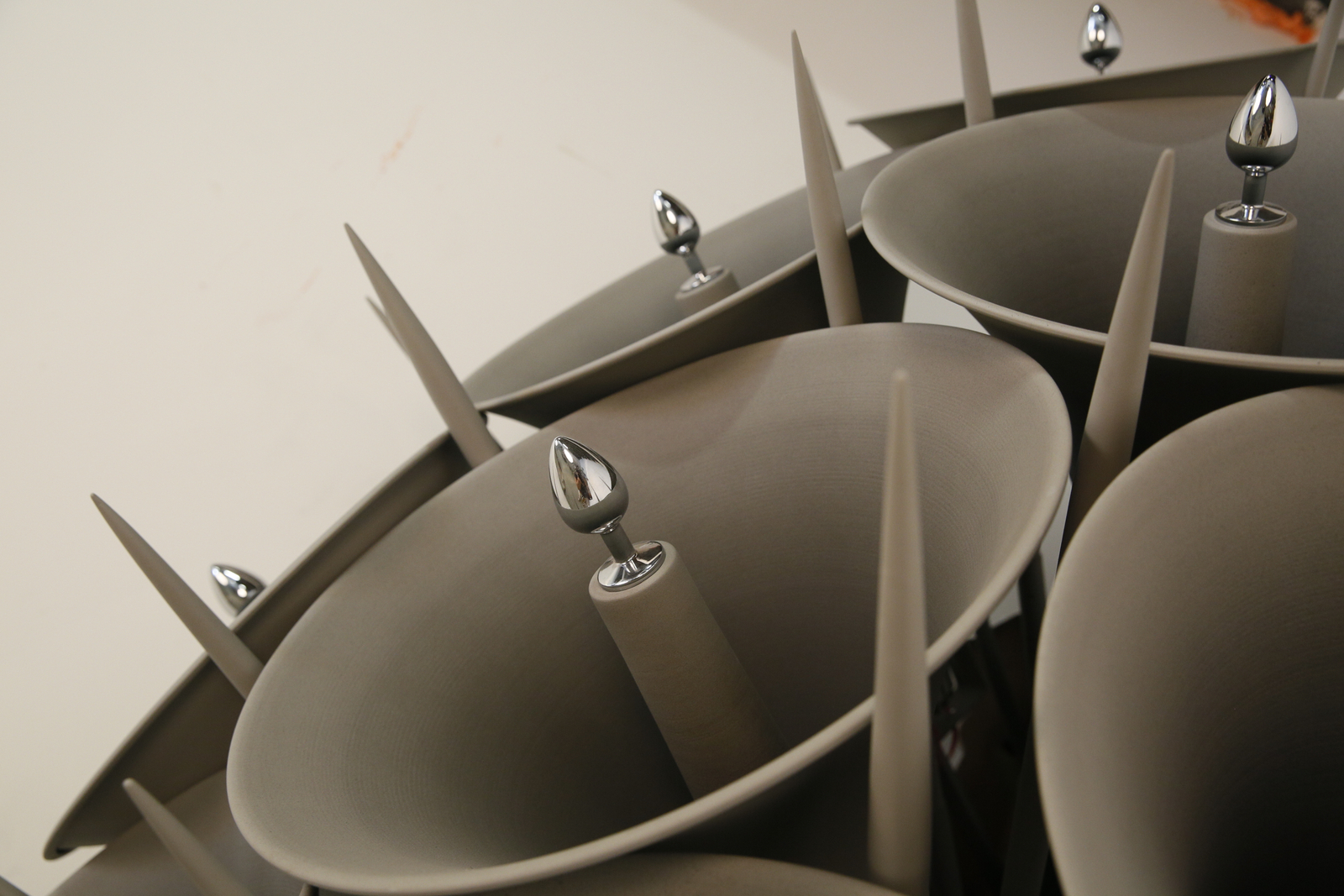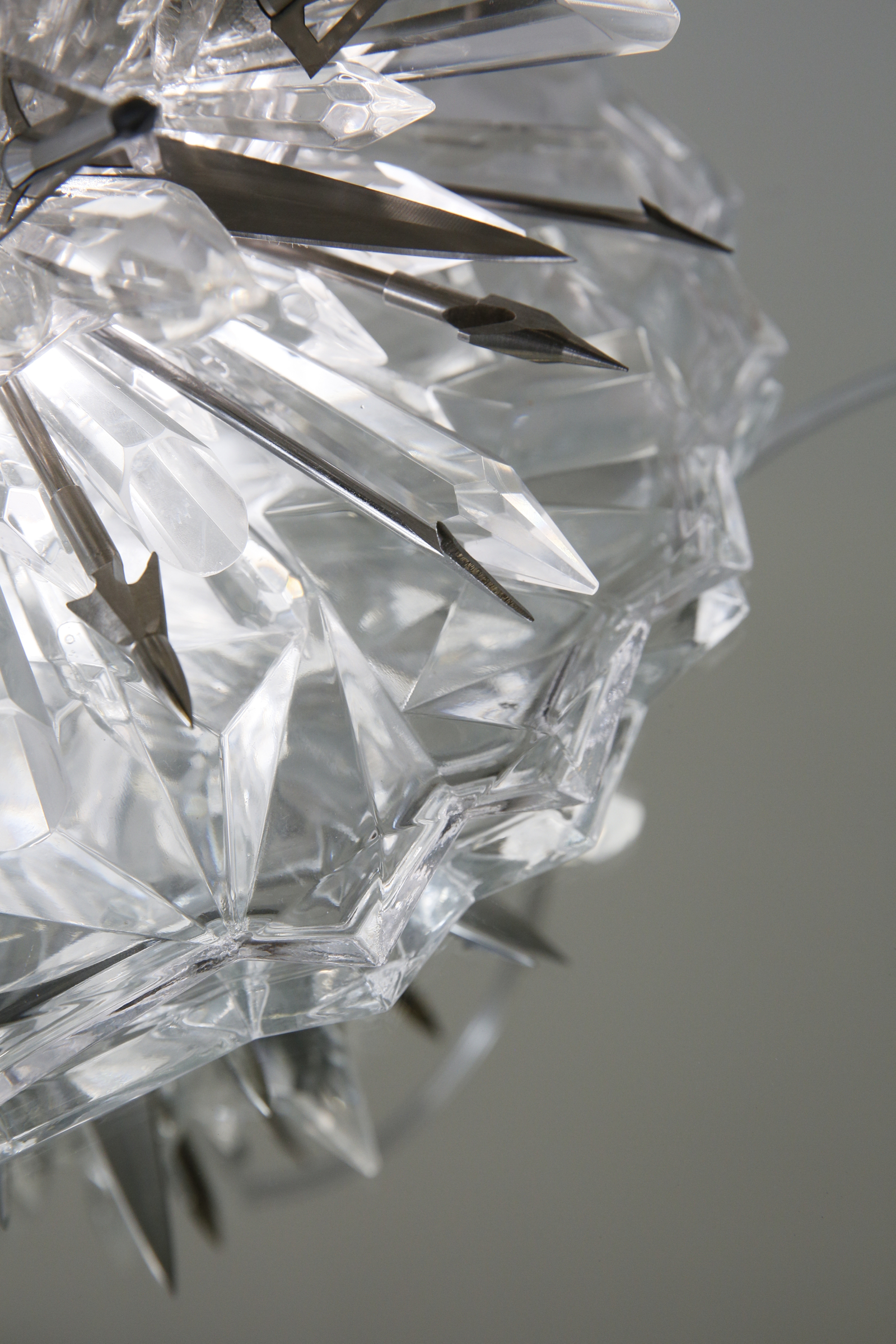Tanya Bonakdar Gallery, Los Angeles 16th November - 21 December
On November 16th 2019 the Tanya Bonakdar Gallery hosted Jónsi’s first solo exhibition.
What is the shape of sound? What does it feel like? Can we smell it? How does it move through your body and what kind of sensations does it trigger? These are the questions that are posed by Jónsi.
Jónsi has expanded his artistic practice over the past few years in a series of collaborations with visual artists such as Doug Aitken, Olafur Eliasson, Merce Cunningham and most recently the artist and composer Carl Michael von Hausswolf with whom he formed the musical duo Dark Morph. In the wake of these collaborations, Jónsi’s most recent solo aesthetic explorations have resulted in a series of immersive installations that sculpt with sound as they ask us to meditate on the liminal threshold between our bodies and the world around us.
The exhibition was a series of three new gallery-based works.
In one work, Í blóma (In bloom), Jónsi takes a group of fourteen institutional public address loudspeakers that you might see at a sporting event or on a prison yard and arranges them in a shape reminiscent of the leaves of the highly poisonous Foxglove flower, also known by its Latin name Digitalis purpurea. A highly toxic flower, Foxglove can cause hallucinations, heart palpitations and even death. Surprisingly, it’s active ingredient is also used in a cardiac medication known as digoxin, so this plant has the dual contradictory aspects of being both noxious and therapeutic at the same time.
This wavering between the dangerous and the restorative is echoed sculpturally by a series of chrome-plated butt-plugs which act as the stamen of this industrial flower. Emanating from this sculpture is a sonic tapestry of human voices – multiple iterations of the artist’s own voice – which have been layered across processed field recordings of the normally imperceptible sounds generated by the flowers themselves. In this call and response between flora and human fauna we hear evocations of pain and pleasure alongside a striving for intelligibility and the melancholy of a frustrated desire to communicate across a trans-species divide.
Walking into the main room of the gallery the visitor is confronted by a nearly empty neutral white space with overly bright light. This suggestion of a minimalist depiction of heaven evokes the sterile light of the mysterious room at the conclusion to Stanley Kubrick’s 2001: A Space Odyssey while being punctuated by sounds emanating from ten hidden speakers and two sub-woofers. Producing as much a space as a feeling, this ten-channel hallucinatory audio track encircles and penetrates our bodies transporting us to a place that is nowhere – in the original sense of the word utopia. Awash in this mesmerizing sonic bath, a human voice – that of the artist – sends out signals into a white void that transports us to somewhere outside of ourselves while very much insisting that we listen to the very bodies that constitute our subjectivity. Hearing is feeling is seeing is being.
The final room of the gallery veers into darkness with a work indebted to the recent popular explorations of autonomous sensory meridian response (ASMR) in which a highly particularized sensory input such as whispering triggers a mildly euphoric static-like or tingling sensation on the skin of an individual. In another work, Jónsi has created a wave-like structure of eight black ceiling panels which undulate slowly back and forth. Attached to each of these panels is a hyper-directional speaker projecting ASMR sounds created by the artist with his own voice – ocean waves, breaths, and finally a whispered version of an old Icelandic poem about the sea. As the speakers move with the wave-like action of the panels, these sounds created with the human voice wash over the visitor in the hope of provoking the bodily resonance associated with ASMR.
Another important element in Jónsi’s work is his embrace of the sense of smell as an expanded field of artistic practice. Having worked with a perfume organ for the past few years he has experimented with the alchemy of perfume creation which, upon closer examination, seems to rely one part on chemistry and another on an elemental poetry. For this exhibition the artist has created three individual scents connected to each work that run the gamut from the pungently acrid Cadaverine– a scent common to decomposing flesh and sperm which emanates from his Foxglove sculpture – to a scent reminiscent of seaweed that will be paired with his ASMR invocation of the sounds of ocean waves.
Taken together, these works speak to the power of Jónsi’s sonic, spatial and scent-driven interventions to upset the traditional division of the senses in the creation of a world of sensory confusion in which the olfactory, the haptic and the auditory collapse into one another in a poetic somatic reverie.

